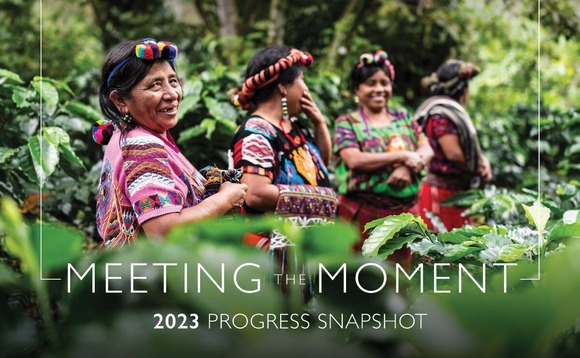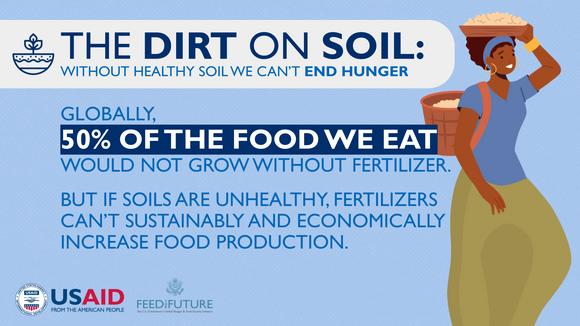|
|
DECEMBER 2023
2023 Progress Snapshot + COP28 +
World Soil Day
At the recent United Nations Framework Convention on Climate Change 28th Conference of the Parties (COP28), efforts to improve food systems were front and center as a means to tackle the global climate crisis. With global demand for food projected to increase by 50 percent between now and 2050, climate change is impacting agriculture production and creating greater inequalities, leading us to change what we eat, how we grow it, and how we support the most vulnerable. Feed the Future, the U.S. government’s initiative on hunger, brings together 12 government agencies to deliver an integrated response to these urgent and interconnected challenges.
Our global food systems are fragile and stressed, but they are also ripe for transformation in ways that will contribute to ambitious climate action. It’s more critical than ever that we ramp up investments in the agriculture sector to address the impacts of the climate crisis to sustainably provide nutritious food and robust livelihoods for all.
|
|
 Meeting the Moment: 2023 Progress Snapshot
Feed the Future’s 2023 Progress Snapshot spotlights how the U.S. government’s whole-of-government initiative is enabling individuals and communities in more than 40 vulnerable countries to reduce poverty, hunger and malnutrition. The report provides global results from fiscal year 2022 along with on-the-ground partner stories on how the initiative is catalyzing inclusive agricultural-led growth, building resilience, improving nutrition, and driving innovation around the world.
Read more
|
|
Climate-Smart Agriculture and Food Systems
By 2050, climate change is projected to reduce crop yields by up to 30 percent in the absence of adaptation, with the world’s smallholder farmers the most affected. Feed the Future is making significant investments today to develop and scale innovations that will mitigate these impacts. See how Feed the Future’s government agency partners are working to achieve this goal.
New Indicators Handbook Available
Do you work with Feed the Future? Check out the updated 2023 Feed the Future Indicators Handbook, which includes Phase Three performance management indicators, guided by the 2022-2026 Global Food Security Strategy. The indicators are designed to measure progress against each result in the Feed the Future results framework. The updated handbook is the result of a year-long process of ongoing interagency cooperation, public comment periods, and collaboration with other technical experts.
|
|
Feed the Future Adds Commitments at COP28
At COP28, USAID, working with Congress, announced another $100 million in investments for the CGIAR over two years to support climate-smart agriculture innovation efforts and to strengthen climate action in food systems. The investments, made through Feed the Future, contribute to the goals of the Agriculture Innovation Mission (AIM) for Climate, and highlight the U.S. government’s commitment to sustainable and resilient food systems.
|
|
 The Dirt on Soil: World Soil Day
To mark World Soil Day, Feed the Future Deputy Coordinator for Development Dina Esposito writes about the crucial role of healthy soils and how USAID is using the surge in global food crisis funding provided by the U.S. Congress to bolster efforts on soil health in new and innovative ways.
|
|
Feed the Future & IFPRI at the Borlaug Dialogue
Russia’s invasion of Ukraine triggered a series of global food system disruptions that continue today. The International Food Policy Research Institute (IFPRI) hosted a discussion looking at the conflict’s impact on Ukraine’s agricultural sector and exports, and on food systems in low- and middle-income countries at the 2023 Borlaug Dialogue, which featured keynote remarks by Dina Esposito.
|
|
|
Feed the Future is the U.S. Government’s global hunger and food security initiative.
Photo Credits: Clément Tardif, NCBA CLUSA and Adam Finch, Root Capital
|
|
|
|